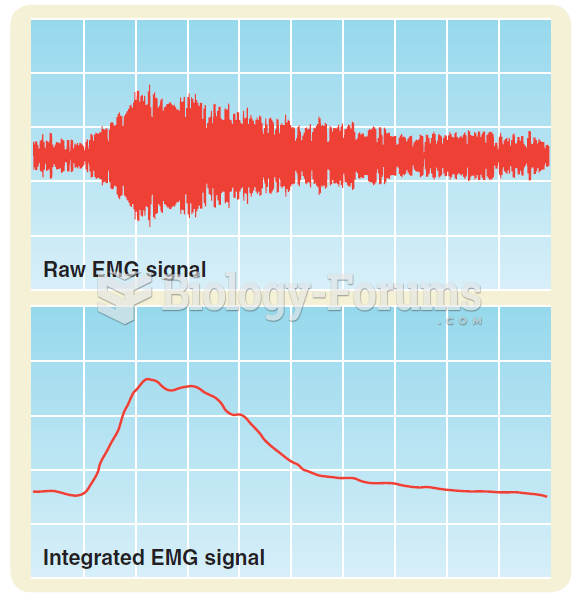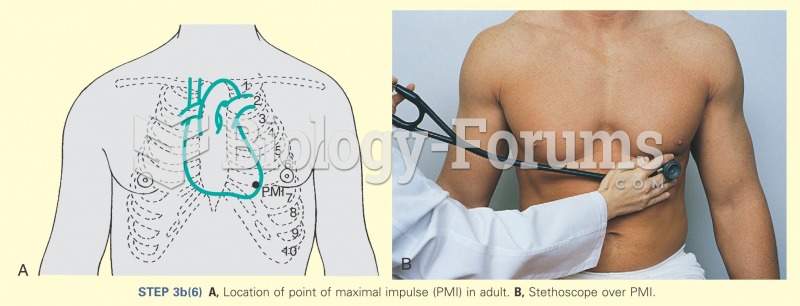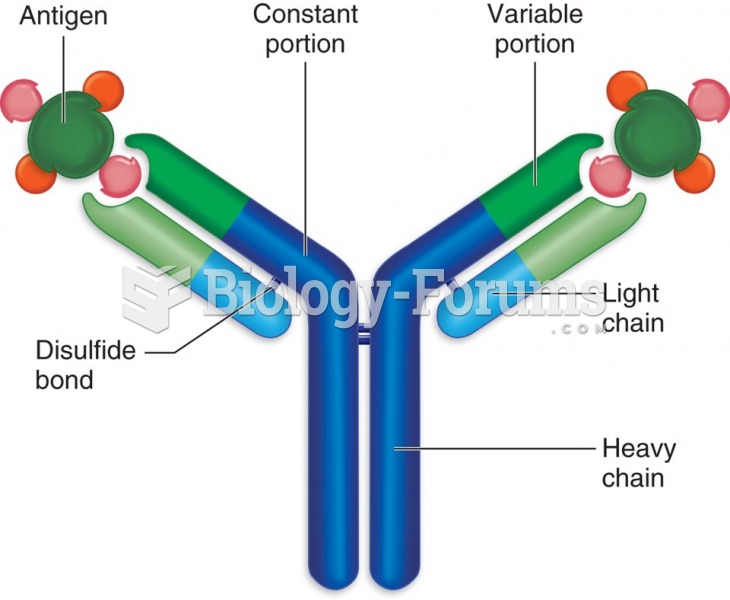|
|
|
Although not all of the following muscle groups are commonly used, intramuscular injections may be given into the abdominals, biceps, calves, deltoids, gluteals, laterals, pectorals, quadriceps, trapezoids, and triceps.
Eating carrots will improve your eyesight. Carrots are high in vitamin A (retinol), which is essential for good vision. It can also be found in milk, cheese, egg yolks, and liver.
ACTH levels are normally highest in the early morning (between 6 and 8 A.M.) and lowest in the evening (between 6 and 11 P.M.). Therefore, a doctor who suspects abnormal levels looks for low ACTH in the morning and high ACTH in the evening.
People with high total cholesterol have about two times the risk for heart disease as people with ideal levels.
Cocaine was isolated in 1860 and first used as a local anesthetic in 1884. Its first clinical use was by Sigmund Freud to wean a patient from morphine addiction. The fictional character Sherlock Holmes was supposed to be addicted to cocaine by injection.
 Moderate to high physical activity in PE classes is one component of a successful prevention effort ...
Moderate to high physical activity in PE classes is one component of a successful prevention effort ...
 The relation between a raw EMG signal and its integrated version. The volunteer tensed her muscle ...
The relation between a raw EMG signal and its integrated version. The volunteer tensed her muscle ...





